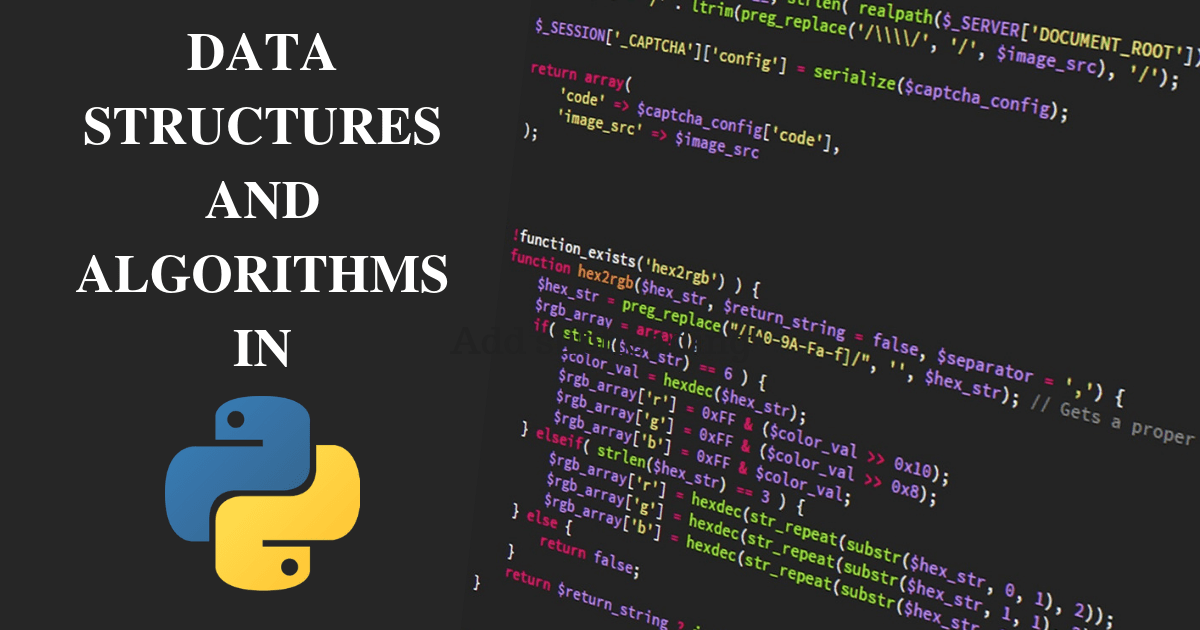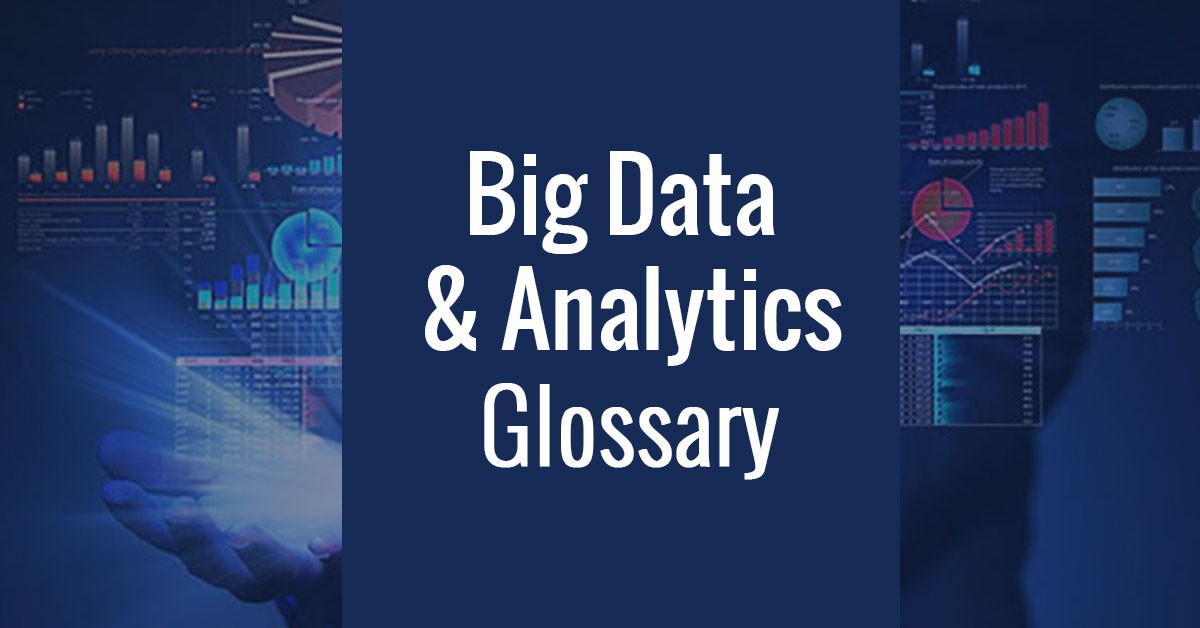Learning a programming language is not as complicated or daunting as it may sound. It’s the best choice for beginners to start with Data Structures and Algorithms in Python. The amazing thing you counter here is its easy learning and use.
In this article, our deep learning of Data Structures and Algorithms in Python includes Python as an object-oriented programming language in general. Here, you will learn about the different types of data Python recognizes, input and output function, string formation and control structures.
The need to study data structures and algorithms in Python will be elaborated along with a few FAQs relevant to the topic at the end of the article.
In computer science, the first step towards solving any problem is the formation of an Algorithm. The Algorithm is defined as a set of instructions, or a step-by-step guide for the computer to solve a given problem.
Algorithms are finite, and a particular algorithm may be used time and again to solve the same recurring problem.
Python, as a programming language, stores and uses data to provide an output or execute a given instruction.
The Statistics:
According to the 2017 Stack Overflow survey, nearly 32% of developers use Python, and a further 20% want to do so.
This statistic proves that Python’s popularity is increasing and its population is exploding.
Coming to Data Structures, they may be defined as a particular structure in which the data given as an input by the user is stored to solve a problem.
It is a more organized method of data storage which also provided the ease of access to the user when it comes to solving a problem in Python.
Data Structures may be classified into two types-
- Primitive and Data Structures
- Non-Primitive Data Structures
Let’s start with the basics that would help us understand Python better.
What is Python?
Python is a high-level programming language introduced in 1991. It came as a general programming both in large and small scales. Now, it features multiple programming paradigms including object-oriented, functional, imperative and procedural.
Python is easily readable language as it makes use of keywords in English. The language makes no use of curly brackets and gives no compulsion to use semicolons after statements.
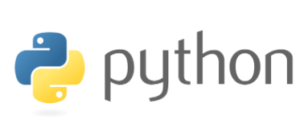
Let’s further bifurcate the concept of Python and learn about Data structures and Algorithms in Python.
Data Structures in Python
Like already mentioned above, Data Structures are data arranged and stored so that it is easily available for the users to put to use in designed operations. Data Structures broadly classified may be summed up as:
- Primitive Data Structures
- Non-Primitive Data Structures
Primitive Data Structures
These may also be defined as the basic Data Structure in Python, containing simple values of data. The variable of the primitive data type are as follows:
- Integers
- Floats
- Strings/ characters
- Boolean/pointer
⇒ Integers
We all understand Integers, which may be any whole number, ranging from negative infinity to infinity.
⇒ Float
Float represents ‘Floating Point Number’ ending with a decimal figure.
⇒ Strings are characters
Strings are the letters or words which are quoted as single or double. There are a plethora of string python methods which you will find here.
⇒ Boolean or Pointer
Lastly, Boolean or pointer is defined as an inbuilt data type which uses either of the two values: True or False. The values are interchangeable with 0 or 1. One may use a Boolean to insert a condition or a comparison.
Non-Primitive Data Structures
These are specialized structures which stores a collection of data and values in myriad format. Their additional property is the organization of the data input. The following are the classifications of Non-primitive data structures:
- Array
- Lists
- Files
Arrays
In Python, arrays are not as popular with users as in other programming languages such as Java or C++. Simply put arrays can be defined as storage for basic data types where its entries must belong to the same data type.
In Python, arrays are lists that carry elements of a particular data type. Information on different types of code provided by the array is available on the Python array documentation page.
Lists
In Python, lists are easily recognizable by brackets[]. These are used to store values of random items. One feature of lists is that their contents can be changed without actually changing their identity. Lists are further divided into two categories: linear and nonlinear.
Linear lists include Stacks and Queues, and Non-linear lists include Trees and Graphics. Stack helps the users to add or remove an element from a list in Python.
Adding an element using the stack feature is known as push operation while removing an element is termed as pop operation
The queues work opposite to stacks and are similar to the ‘First-in-First-out method wherein there is insertion at the end and deletion in the beginning. Queues do not work very well for lists as it shifts the whole element positions.
Graphs are used for various purposes in Data Science. For instance, determining if there exists a path between two nodes or determining the shortest path.
Finally, a Tree structure can be built by combining various Data Structures to add volume to the output. Designs using the tree structure in python can be easily found in the gaming world. The PDF design principle is also based on a Tree.
File
It is used to store a huge load of data in Python. There are functions in File that allows the users to open files, read the entire File, read one line at a time, write a string to a file and close the file.
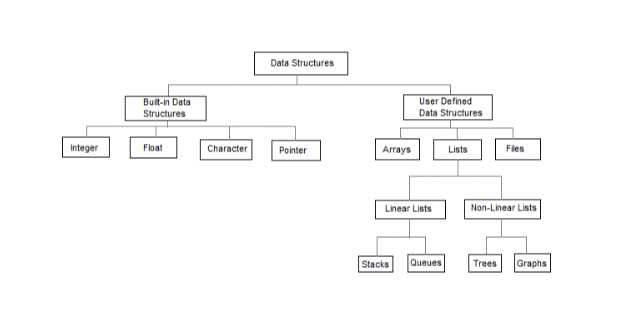
Algorithms in Python
Algorithms are a basic guideline for solving a problem in a programming language. Below, I’ve mentioned some important categories of algorithms:
- Sort– This algorithm sorts data in a certain order.
- Search– Helps with searching an item in the data order.
- Insert– Helps with inserting an element in the data order.
- Update– Updates an element in the data order that was existing.
- Delete– It helps with removing an item from the data order.
There is no written protocol on the way of using algorithms. These must be formulated according to the problem. So, let’s see an example on how to use algorithms to solve a problem in Python.
Say you are to design an Algorithm to add two integers. You need to start by declaring three integers (a,b and c). Next, you need to assign values to the integers (a and b) and add them. The added value needs to be stored in an integer, c. The last step to display the result is ‘print c’.
Problem-Solving with Algorithms and Data Structures using Python
Problem Solving is very easy with a user-friendly programming language, Python. Let’s know about some of Python functions and see a few examples to make things clear with respect to Data Structures and Algorithms in Python.
-
Input and Output Function
The input function in Python takes data from the users and converts it to a string. Below is an example of an input function.
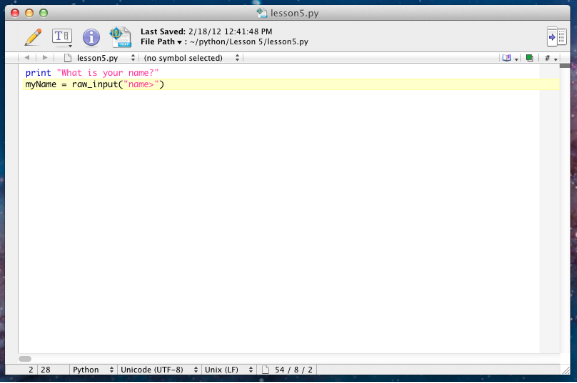
The Print function provides the output values in Python.
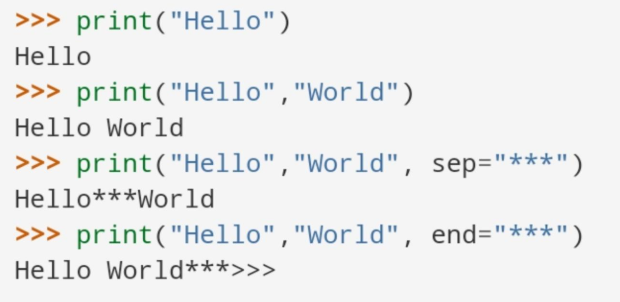
-
Control Structures
Python supports two important control structures that algorithms require: selection and iteration. Using Python’s while statement, until the condition for the statement is true, the body code is repeated.
For statement will iterate over the value of a collection. The second important function of For statement is the implementation of definite iteration over the range of values.
There would be an if-else and an if function used to implement conditions in an Algorithm. Below is an example of such a function.
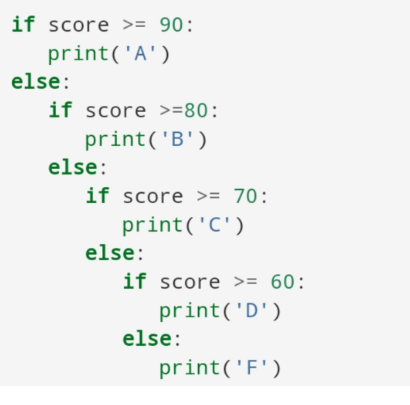
FAQs About Data Structures and Algorithms in Python
Q1: How efficient is it to implement Data Structures and Algorithms in Python?
Ans: Python is a high-level programming language and therefore makes it efficient to implement Data Structures and Algorithms. Read this complete guide to know more about data structures and algorithms in Python.
Q2: How can I learn or strengthen my knowledge of data structures and algorithms in Python?
Ans: Practice makes it perfect. Try working on simple algorithms yourself in Python with the use of different functions. Data Structure and Algorithm thinking with python pdf has all the guidelines summed up.
You may go through the data structures and algorithms in python pdf whenever necessary to gain more knowledge about Python features and master functions in Python. Polish your skills by working on projects online.
Q3: Where can I find the implementation of Standard Data Structures and Algorithms in Python?
Ans: Direct yourself to the Python standard library which would have sufficient example for you to implement data structures and algorithms in python.
Conclusion
In case you are still stuck with the voice in your head that makes you question – why you should learn about data structures and algorithms in Python, the answer is simple – to solve problems in hand which are hard to solve otherwise.
You would need to know about Data Structures to hold the input or data. Set your steps to Web Scrapping with Python to serve your purpose in various fields. You can implement its applications everywhere, right from the most popular search engine, Google Search.
Python is a user-friendly language and is apt for beginners who want to become a Data Scientist. One must start learning the tips and tricks of coding in Python. Kick off with coding in Python with good data structures and algorithms PDF.
Join the Python Programming Course to specialize in Python Programming.
